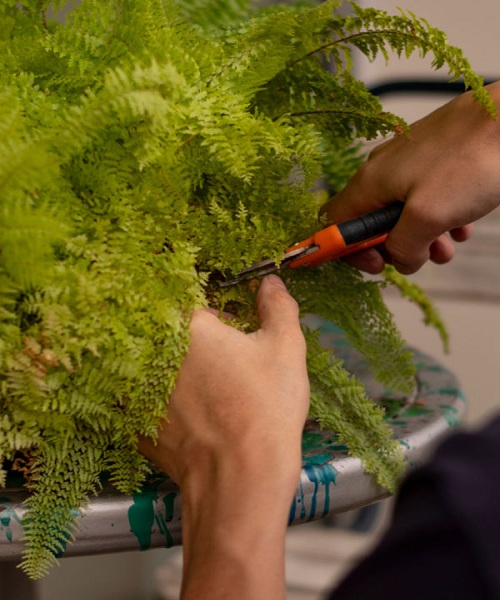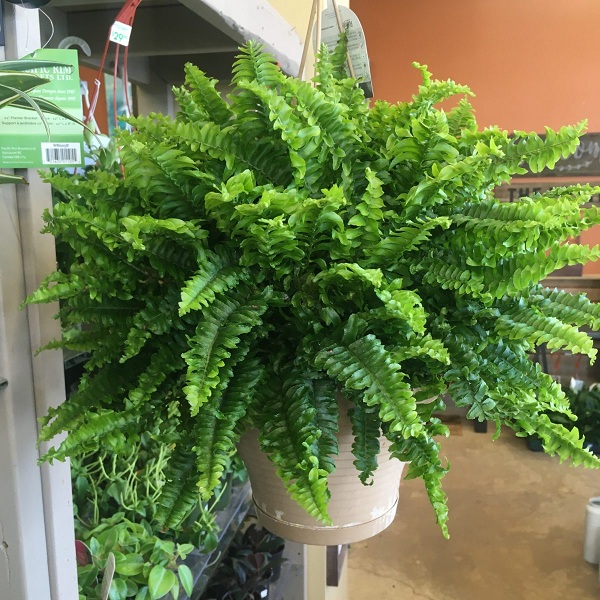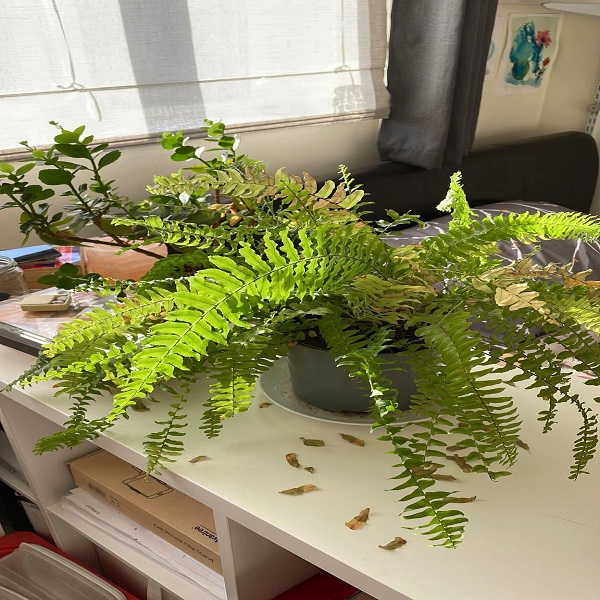Ferns are the perfect multi-purpose plant. They are beautiful when hung in baskets, but they also thrive when planted in containers or even in shady flowerbeds. And, boy, do they grow quickly! With even the least amount of care, ferns can quickly reach their full potential in size within a single growing season. However, many ferns cannot survive through the end of the growing season.
But here’s the good news: saving your ferns is a breeze. Ferns, it turns out, are one of the easiest plants to overwinter. And here’s what might be the greatest part: you can not only keep your ferns alive for next year, but you can also multiply them by dividing the larger ones. Keeping that in mind, let’s take a look at how you can save your ferns this fall.
Preventing Frost Damage to Plants
When a heavy frost hits your fern, it’s usually too late to save it. The first step in saving ferns is to move them indoors before the first frost.
Ferns can tolerate mild cold and even light frost, but not prolonged exposure to freezing temperatures. Plants need to be protected from heavy frost or freeze as early as mid to late fall, when temperatures begin to decrease.
Because of this, you should get your fern ready for indoor life well in advance of the first frost. And you can start doing that by training your fern for indoor life.

Cutting Back / Pruning
Pruning your fern before bringing it inside for the winter is essential for its survival. During the hot summer months, ferns typically reach their full size. In their full dimensions, they can be difficult, if not impossible, to accommodate indoors.
If your plant is of moderate size, you can cut it back and keep it whole. If your fern, however, has reached monstrous proportions, you may want to divide it first. If that’s the case, we’ve provided dividing instructions at the bottom of the article.
When caring for a plant that will not be divided, it is best to start by cutting away any excessively long stems and leaves to make the plant more manageable. If necessary, cut down on growth by a few inches or more. If you have very little indoor space, you can even cut the plant back completely; with good winter care, it will grow back in full the following spring.
After you’ve finished pruning, give your plant a good wash. Using a spray from your garden hose is the most effective method for this. This will not only wash away the clippings, but also flush out any unwanted pests that may have hitched a ride.
Make sure to lift the plant’s leaves and spray it all the way down. This can assist get rid of pests and their eggs as well as any existing pests. As soon as the plant has dried out, you can bring it inside!

Bringing Indoors
If your fern doesn’t need to be split, let it dry out completely before bringing it inside. You can hang them outside in the afternoon sun to ensure that they’re completely dry.
It’s now time to choose the ideal indoor overwintering spot. To get the best results, choose a spot that is cool but not subject to freezing temperatures. Many people find that their basements are ideal for this purpose, but some have found that their garages or even a corner of a cool room in the house may do the trick.
A fern may endure the dark winter months without needing full sun or bright light. In fact, the plant’s foliage can be damaged by an excess of light coming through a window. That’s why it’s crucial to keep them far from windows facing south, where the sun’s rays might still produce an excessive amount of light.
For ferns, a garage window or even a window in a basement well is all they need for sporadic, indirect light. The rule of thumb is that less is better when it comes to lighting.

Winter Care
Growing ferns indoors through the winter is surprisingly easy. You may skip the fertilizer; all your plants require is regular watering. Soil moisture should be checked every 5–7 days, and watering should be done only when the soil is entirely dry.
Keep in mind that your current goal is not to grow an attractive plant in your home. Instead, you’re simply overwintering and preserving the fern until it can thrive again during the warm summer months.
This should prepare you for the fact that the plant will not have its best appearance. The leaves will get paler before winter ends and spring arrives. In addition, some will tumble to the floor. At this time, the fern is more or less hibernating, but it will survive.
As the weather warms up, it’s time to bring your fern outside to restore its health, vigor, and color. Take the same precautions against the spring frosts and freezes. The more time it spends in the open air, the sooner it will emerge from its dormant state and start producing new leaves.

Fall Repotting & Dividing Large Ferns
The optimum time to divide and replant ferns is in early autumn, especially if they are particularly huge or have outgrown their pots. A decent rule of thumb is to divide the fern into three sections, each one a third of the size of the original container, if you want to preserve the fern at the same size for next year.
For the best results when dividing plants, trim all of the leaves to within an inch or two of the base before you begin. After dividing, transfer to a new container and fill to the brim with a standard potting soil.
You can get even more plants by repotting the other sections now. The ferns will regenerate partially from the cuttings over winter, but will return in full once they are placed outside.


